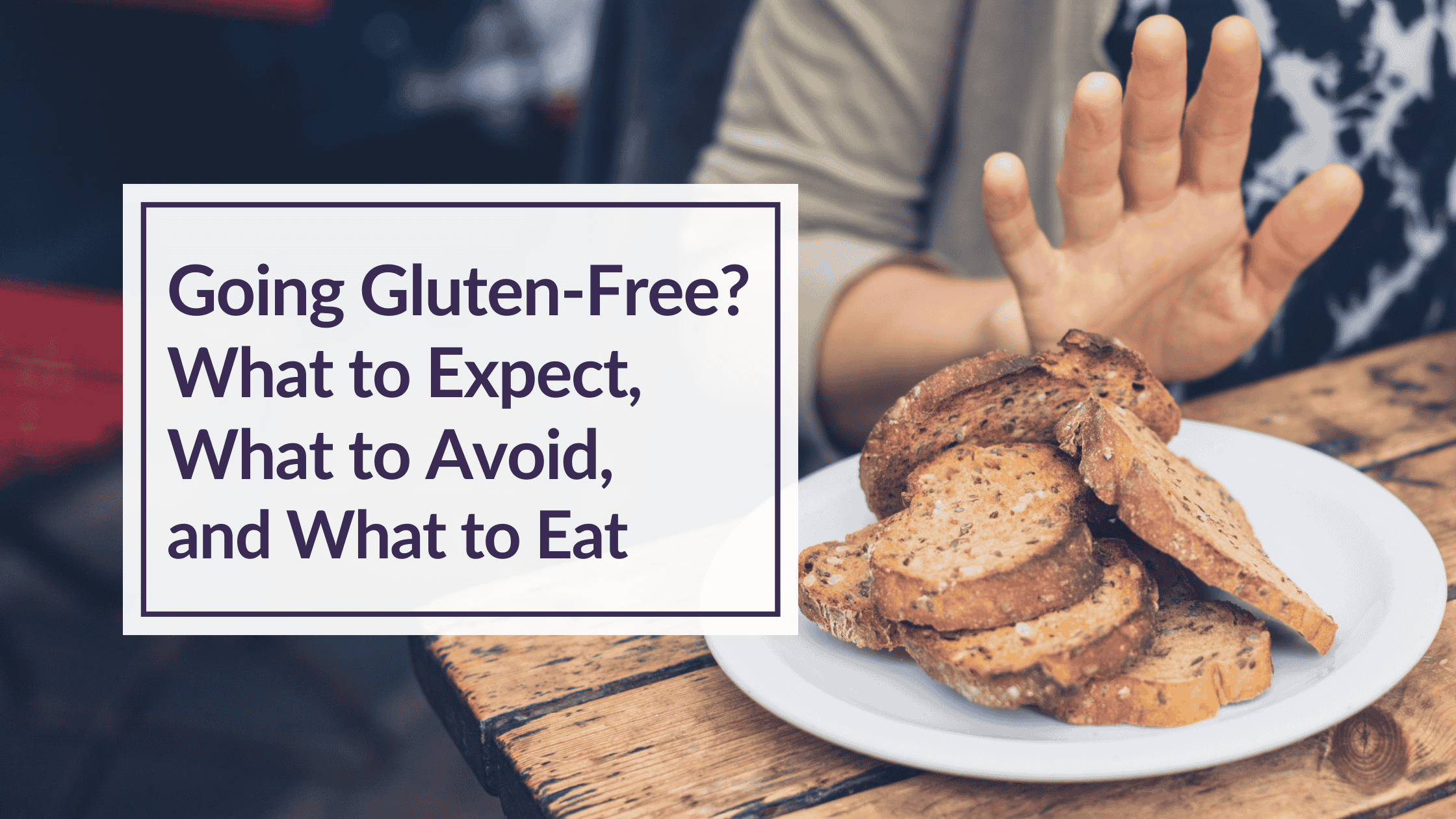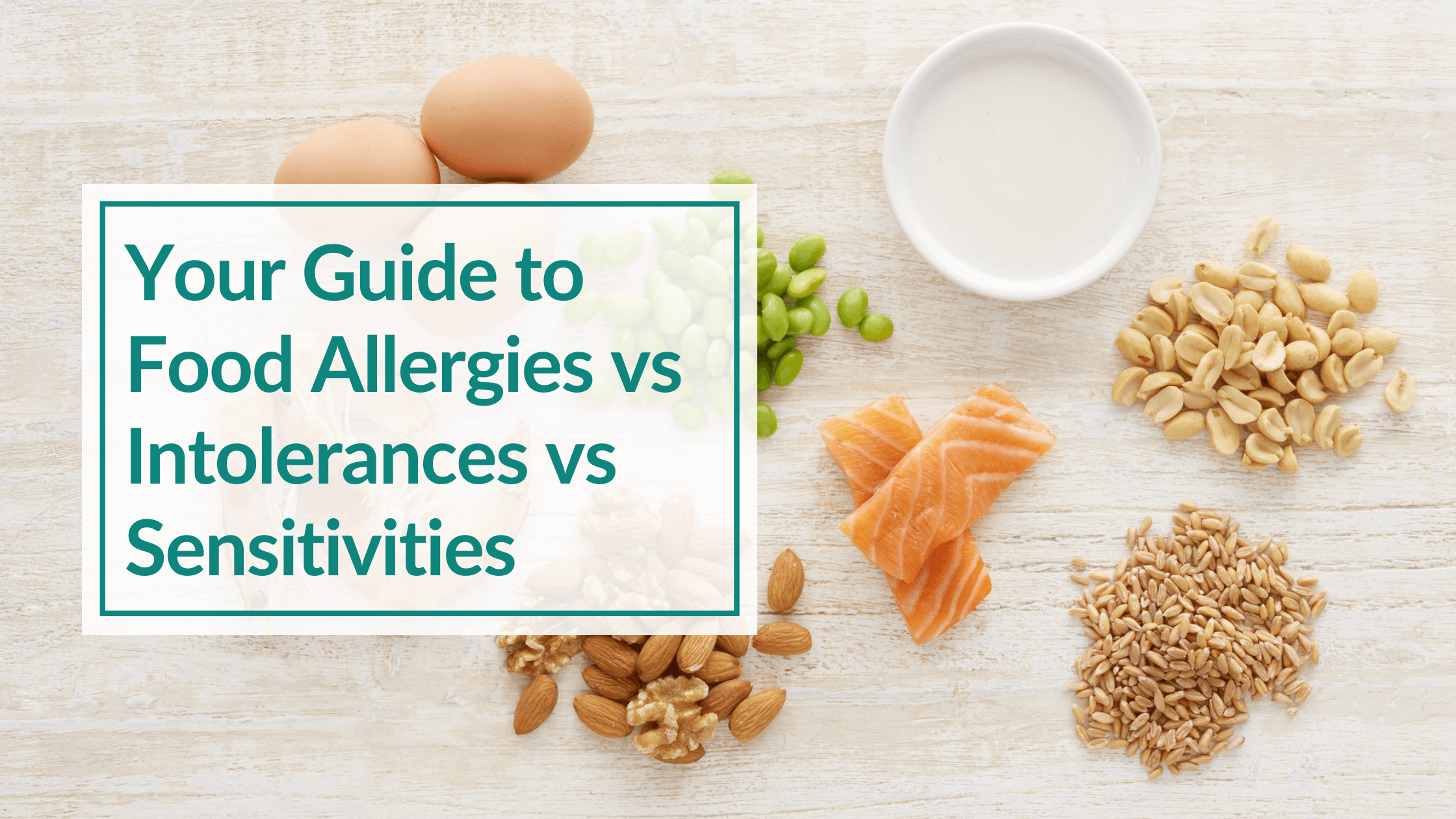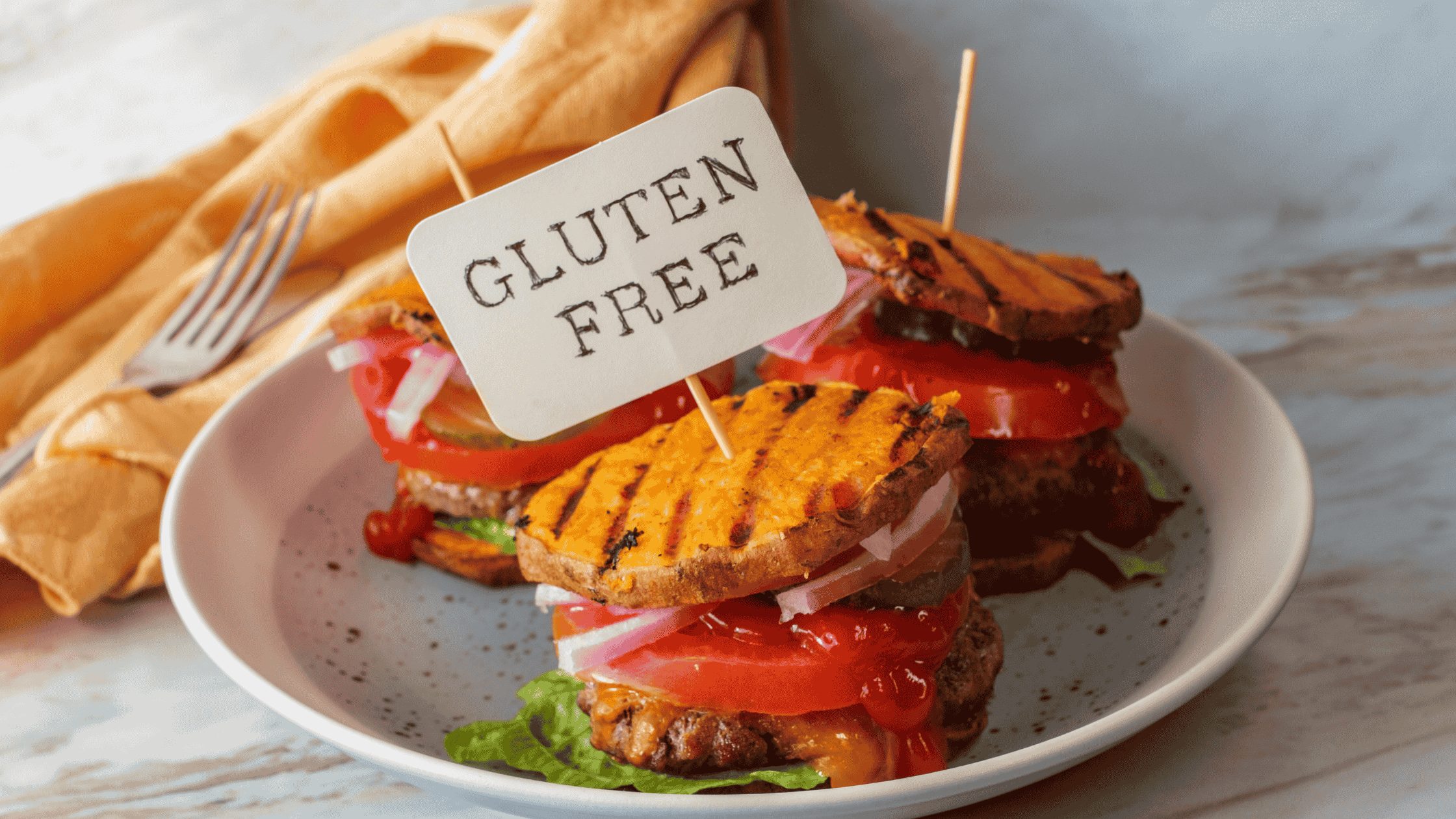
More people than ever are going gluten-free.
For some, it’s medically necessary. For others, it’s about reducing inflammation. Either way, the gluten-free lifestyle has moved far beyond a passing trend into a bigger conversation about gut health, autoimmune conditions, and day-to-day well-being.
So why are so many people making the switch, and does it actually help? The benefits of going gluten-free can vary depending on your body’s unique story, but the shift is worth exploring for many.
If you’re new to going gluten-free (aka cutting out foods containing gluten, a protein found in wheat and other grains), it can feel like you’re stepping into uncharted territory. What’s off the table? What’s still fair game? And how do you survive without bread?
Here’s what you need to know about making the switch, how it may support your health, and what to eat when living gluten-free.
Why Gluten-Free?
Whether you’re navigating celiac disease or just noticing that pasta leaves you bloated, there’s real science behind how gluten can affect the body. And it’s not always a one-size-fits-all story.
Let’s look at the most common reasons people turn to a gluten-free lifestyle.
1. Celiac Disease
This is the most well-known reason for going gluten-free. Celiac disease is an autoimmune condition where gluten triggers the Immune System to attack the small intestine lining. This damages the villi (tiny finger-like projections responsible for absorbing nutrients), which can lead to malabsorption and widespread nutrient deficiencies. Long-term malabsorption from celiac disease can lead to more serious complications, including infertility, recurrent miscarriage, osteoporosis, growth delays, anemia, neuropathy, and more.
Even tiny crumbs from a toaster can trigger an immune response in people with celiac disease. That’s why 100% gluten avoidance is the only option.
Fast facts:
- Affects about 1% of the population globally, but only 30% are properly diagnosed.
- It can be diagnosed through blood tests and confirmed with a biopsy.
- Symptoms vary widely — some people experience digestive issues, while others have anemia, migraines, or skin rashes.
2. Non-Celiac Gluten Sensitivity (NCGS)
Don’t have celiac, but still feel off after eating gluten? You could have non-celiac gluten sensitivity (NCGS), also called gluten intolerance.*
People with NCGS may experience symptoms like bloating, gas, diarrhea or constipation, headaches, fatigue, brain fog, joint pain, mood issues, anxiety, and depression after consuming gluten.
If gluten leaves you feeling foggy, anxious, or just “off,” you’re not imagining it. The gut-brain connection helps explain how gluten can impact neurological and cognitive function, even in those without obvious digestive issues.
People with NCGS will test negative for both celiac disease and wheat allergy. Researchers believe this may be due to an innate immune response, rather than the autoimmune mechanism seen in celiac disease.
Research shows that it may not be just gluten causing the problem. Gluten’s main proteins — gliadin and glutenin — can trigger different reactions. But in some cases, other wheat components like amylase-trypsin inhibitors (ATIs) or fermentable carbohydrates (FODMAPs) create trouble, making it harder to pinpoint the exact culprit.
* The terms “sensitivity” and “intolerance” are often used interchangeably in everyday language, and sometimes even in research, which adds to the confusion. Generally, food sensitivities involve the Immune System, while intolerances do not. However, with NCGS, which is considered a sensitivity or intolerance, immune involvement is suspected.
3. Wheat Sensitivity or Intolerance
Wheat and gluten are often used interchangeably, but they’re different. As mentioned above, people can be sensitive to other grain components like wheat. These include proteins, enzymes, and carbohydrates that don’t fall under the gluten category.
Wheat allergies trigger a classic IgE response (think hives or anaphylaxis), but wheat sensitivity may show up more subtly, like fatigue, congestion, or skin issues.
The gluten-free lifestyle may offer relief here, too, since most gluten-containing foods also contain wheat.
Please check out our blog to learn more about the differences between food allergies, sensitivities, and intolerances.

4. Autoimmune Conditions
If you have an autoimmune condition, like Hashimoto’s, lupus, rheumatoid arthritis, or multiple sclerosis, gluten might act as a trigger.
Here’s why: Gluten (especially the gliadin protein) shares structural similarities with proteins in your own body, such as those in the thyroid gland, Nervous System, or joints. Through a process called molecular mimicry, your Immune System may confuse the two and start attacking your tissues, leading to flare-ups or worsening symptoms.
Many practitioners recommend that people with autoimmune conditions try a gluten-free lifestyle for at least a few months to see if it supports symptom relief.
5. Inflammation and Leaky Gut
Gluten can increase intestinal permeability — aka “leaky gut” — in sensitive individuals. The protein zonulin, which regulates the tight junctions in the gut lining, spikes after gluten exposure in people with celiac or gluten sensitivity.
When the gut lining becomes more porous, undigested food particles and toxins can slip into the bloodstream, setting off inflammation and immune responses. This can show up as skin issues, fatigue, food sensitivities, or brain fog.
6. Skin Conditions Linked to Gluten
Your skin might be trying to tell you something.
Celiac disease can cause Dermatitis herpetiformis — a blistering, itchy skin rash. But even in people without celiac disease, gluten has been linked to eczema flare-ups, hives, and unexplained rashes. The gut-skin axis may play a role here: when the gut barrier is compromised, the skin often reflects that internal stress. If someone is dealing with persistent or mysterious skin issues, trying a gluten-free lifestyle can sometimes offer surprising improvements.
What to Avoid When Going Gluten-Free
Breaking up with gluten means more than just saying goodbye to bread and pasta. Here’s a detailed list of what to watch for:
The Big Three: Wheat, Barley, and Rye
These are the major gluten-containing grains. They’re often found in:
- Regular bread, pasta, tortillas, and baked goods
- Crackers and pretzels
- Breakfast cereals
- Pancakes, waffles, and muffins
- Beer and malt beverages
- Soups, bouillons, and gravy mixes
- Stuffing and breadcrumbs
Watch for these wheat relatives: spelt, farro, kamut, durum, semolina, triticale, and einkorn.
Gluten in Processed Foods
Even foods that seem safe can contain gluten as a thickener, stabilizer, or flavor enhancer. Be wary of the following unless they are labeled gluten-free:
- Soy sauce
- Pre-marinated or seasoned meats
- Salad dressings, sauces, and dips
- Candy, chocolate bars, energy bars, and granola bars
- Ice cream and frozen yogurt
- French fries (especially in shared fryers)
Double-check for terms like malt, wheat flour, or modified food starch unless labeled gluten-free.
Cross-Contamination
Even naturally gluten-free foods can be contaminated:
- Oats
- Grains like quinoa or millet processed in shared facilities
- Shared toasters, cutting boards, or fryers
- Buffet-style restaurants or bakeries
Look for certified gluten-free products and check how food is prepared in restaurants.
Non-Food Sources
Gluten can show up in other unexpected ways, like:
- Medications and supplements (as binding agents)
- Lip balm and lipstick
- Toothpaste and mouthwash
- Play-dough and art supplies
What to Eat on a Gluten-Free Lifestyle
Now, for what you can enjoy! The benefits of going gluten-free will shine brightest when your plate is filled with real, whole foods that naturally support your body.
Here’s what that can look like:
- Gluten-free grains and starches like quinoa, brown or wild rice, millet, buckwheat, amaranth, teff, corn, potatoes, and sweet potatoes.
- The entire world of fruits and vegetables is wide open! Load up on leafy greens, root vegetables, cruciferous picks like broccoli and cauliflower, and colorful fruits like berries, apples, citrus, bananas, and mango.
- When it comes to protein, you’ve got plenty of options. Eggs, poultry, beef, pork, lamb, wild-caught fish, and shellfish are all naturally gluten-free when unprocessed. Plant-based eaters can lean into lentils, chickpeas, beans, tempeh, or tofu. Be mindful of any pre-marinated or breaded products, which often contain gluten.
- Dairy and dairy alternatives like plain yogurt, cheese, butter, and kefir. Gluten-free nut milks (such as almond, coconut, or oat) are usually safe, but double-check labels for hidden thickeners or flavorings that may contain gluten.
- Don’t forget about healthy fats and pantry staples. Olive, coconut, and avocado oil are great cooking options, and you can snack smart with raw or dry-roasted nuts and seeds. Look for gluten-free nut butters, vinegars (skip malt vinegar), and tamari or coconut aminos as a soy sauce alternative. For baking or cooking, gluten-free flours like almond, coconut, cassava, rice, or sorghum are versatile and delicious.
Today’s market is full of high-quality gluten-free substitutes like breads, crackers, pastas, oats, cookies, and snack bars. Just remember — gluten-free doesn’t always mean healthy. Keep an eye on sugar, additives, and overly processed ingredients if you want to feel your best.
What to Expect When Going Gluten-Free
So, what are the benefits of going gluten-free? Here’s what you might notice, both the good and the challenging:
Better Digestion: People often report less bloating, gas, cramping, or irregular bowel movements within days or weeks.
Clearer Thinking: It’s not uncommon to experience sharper thinking and greater focus.
More energy: When inflammation lowers, your energy can rise.
Some Initial Frustration: Reading ingredient labels can feel overwhelming at first. Because gluten hides in unexpected places, the learning curve can be steep, but there are plenty of great gluten-free alternatives once you know what to look for.
Social Speed Bumps: Dining out or traveling might take more planning, but the growing availability of gluten-free options makes it easier than ever.
Better Food Awareness: One overlooked benefit of going gluten-free is how it naturally encourages more mindful, conscious eating. People often begin paying closer attention to ingredients, quality, and food sourcing. This can lead to eating fewer processed foods and more whole, nutrient-dense meals.
Is Going Gluten-Free Right for You?
The gluten-free lifestyle isn’t just about what you’re avoiding — it’s about what you’re potentially making room for, like better digestion, improved mental clarity, reduced inflammation, and a stronger connection to how food makes you feel.
And if you need support navigating your gluten-free journey, CBH Energetics is here to help. Our scans help uncover hidden stressors, including bioenergetic food sensitivities, which may include gluten-containing grains like wheat!


